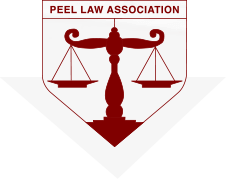Treating your pet as if they were part of the family has become the status quo in North American homes. However, in the context of divorce, what do the Courts have to say on the subject? Recently, Justice R.W. Danyliuk of the Court of Queen’s Bench for Saskatchewan, in the Saskatoon Family Division decided to tighten the leash on the issue. In the case of Henderson v. Henderson, 2016 SKQB 282, Justice Danyliuk found himself dealing with a disagreement between a divorcing couple who could not agree about where their pet dogs (Kenya and Willow) should live. In particular, the wife was seeking an arrangement akin to child custody whereby Kenya and Willow would reside with the wife on a permanent basis, and she would offer visitation rights (“access”) to her husband. In addition to permanent residence and access, the wife was seeking full decision making powers over her beloved pets. Oftentimes coined as the best interest of the pet test, the above-outlined argument has been attempted before on tax-payer’s dollar- although traditionally the Canadian Courts have declined the opportunity to get involved in resolving clashes over pets. Justice Danyliuk however, decide to take a more authoritative tone and provide some finality on the topic. According to His Honour, the only correct way to deal with the family pet problem is to accept the fact that family pets are fundamentally property, and as such, they are governed by the law of property when attempting to determine issues relating to ownership and possession. While acknowledging the emotional complexity of the bond between pet and human, the Court explained to the parties that arguing over the access and custody of a dog is equivalent to arguing over the access and custody of a butter knife. In the eyes of the law, the end result will be the same. Justice Danyliuk at paragraph 41 of his decision reminded the parties that they would face uncertainty if the matter progressed, and that a mutually agreeable resolution should be attained if at all possible. His Honour went on to highlight that in the face of litigation, if the Court failed to reach a decision on where the dogs go, it is ultimately open to the Court to order that the property in question be sold and that the proceeds of the sale be split between the parties. His Honour concluded at paragraph 42 of his decision, that the matter would not be decided on principles of child custody. Justice Danyliuk however, eventually throws the parties a bone by shedding some light on what considerations if any he WOULD take into account, when making a decision:
- His Honour outlined that he would evaluate the terms of any cohabitation agreement between the parties and how, if at all, it pertains to the property: AND
- His Honour would consider any factual determinations available relating to how the property was acquired, and who cared for the property both during and after the relationship.
What can we take away from this case? Well when it comes to Buddy the conclusion is clear: dogs are property- that are to be governed by the law of property – with consideration of the relevant factors specific to the case at bar. Although these issues have been deemed justiciable by Court of Queen’s Bench for Saskatchewan, parties are to be strongly discouraged from bringing these matters to Court. As is the case with most family law related issues; amicable resolution, wherever possible, is the ideal – otherwise you might just end up chasing your own tail.













